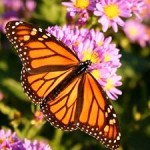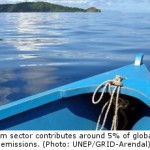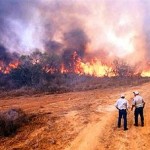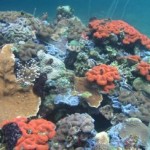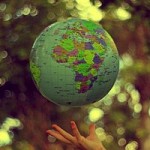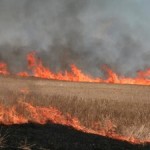 At the end of the 21st century, the temperature in the Baltic Sea will be higher and the salt content lower than at any time since 1850. If no action is taken, there may be major consequences for the marine environment.
At the end of the 21st century, the temperature in the Baltic Sea will be higher and the salt content lower than at any time since 1850. If no action is taken, there may be major consequences for the marine environment.
“This is the first time anyone has taken a detailed look at how climate models and individual factors combine to affect a specific region,” says Jonathan Havenhand, researcher at the University of Gothenburg, Sweden.
A large number of researchers from countries around the Baltic Sea have been collaborating on an inter-disciplinary project to study the effects of global climate change on the environment in the Baltic Sea. They have combined today’s best climate models with models of additional factors that affect the environment in the Baltic Sea.
“There are plenty of studies showing the environmental impact of individual factors, or models showing global changes in the climate, but this is the first time that anyone has taken a detailed look at how these factors combine to affect a specific region. This makes this project unique,” says Jonathan Havenhand from the Department of Biological and Environmental Sciences at the University of Gothenburg.
Researchers have studied how well the models work by entering data from 1850 until 2006, and then comparing the models’ predictions with what actually happened during that period.
The models proved to be reasonably accurate and were, therefore, used to predict what will happen in the Baltic Sea between now and 2098. The models show that the salt content in the Baltic Sea will fall and that the temperature will rise as a consequence of increases in air temperature and precipitation.
The increase in temperature will cause the oxygen content of the water to fall, making the effects of eutrophication more pronounced. The change in salt content may result in species that are currently at the edge of their dispersion area disappearing, leading to a decline in the diversity of species.
“One such example is the blue mussel, which cannot survive if the salt content is lower than it is at present in the Northern Baltic Sea. It feeds on algae and purifies large volumes of water. This makes it an important species. We can also expect cod stocks to fall, even if we restrict fishing, as the oxygen content, temperature and salt content will change so much that reproduction will become difficult,” says Jonathan Havenhand.
In their study, the researchers showed that despite these changes, it may be possible to counteract the effects of global climate change on the environment in the Baltic Sea, for example, by reducing the run-off of nutrients from land. One special feature of the study is that it quantifies the effects of such measures.
“We aren’t making any judgement about what should be done, we’re simply providing a tool to allow decision-makers to assess what needs to be done in order to achieve a given desired effect,” says Jonathan Havenhand.
 But according to a questionnaire-based survey conducted among decision-makers in the countries around the Baltic Sea, those in power would prefer to wait. The results showed that while they might view climate change as a problem, it is perceived to be something relatively remote in terms of time.
But according to a questionnaire-based survey conducted among decision-makers in the countries around the Baltic Sea, those in power would prefer to wait. The results showed that while they might view climate change as a problem, it is perceived to be something relatively remote in terms of time.
This led researchers to the conclusion that more information is needed about the importance and urgency of measures to counteract the effects of climate change.
The results of the study will contribute to the Helsinki Commission’s (HELCOM) proposed action plan for the Baltic Sea.
This project was a three-year BONUS project as part of the EU’s initiative for the Baltic region. The results were published recently in Environmental Research Letters.
Details of the Study:
Source: By Carina Eliasson, University of Gothenburg.

